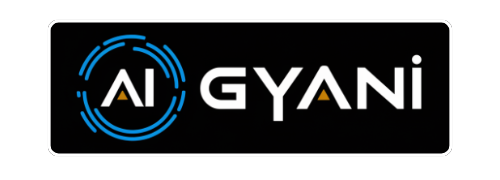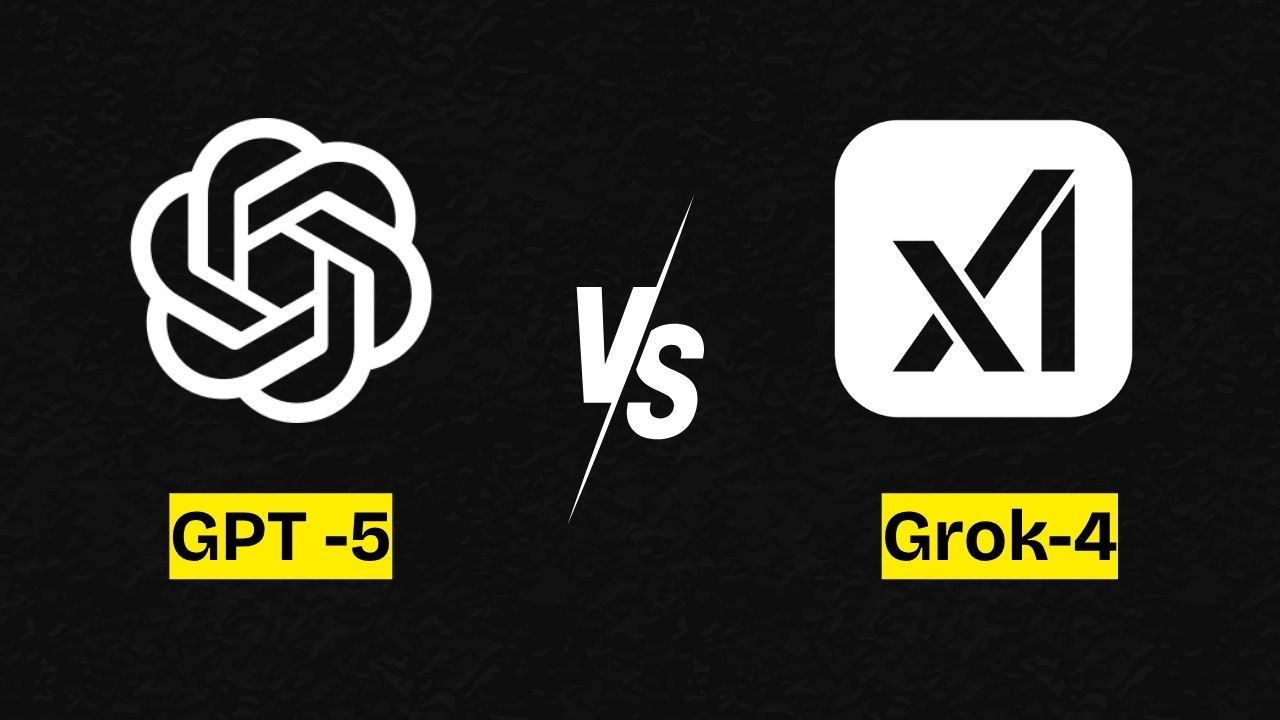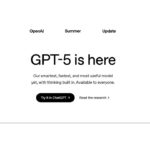In the rapidly advancing world of artificial intelligence, two models stand out as titans: xAI’s Grok 4 and OpenAI’s ChatGPT-5.
Released in July and August 2025, respectively, these cutting-edge large language models have sparked intense discussions about their capabilities in reasoning, coding, and multimodal tasks.
Grok 4 vs. ChatGPT-5 is the showdown AI enthusiasts have been waiting for, with each model bringing unique strengths to the table.
This blog post dives into a detailed comparison, exploring their performance, features, and ideal use cases to help you decide which AI powerhouse suits your needs, whether you’re a developer, researcher, or business professional.
Release and Availability
- Grok 4 became available in July 2025 through the xAI API and SuperGrok subscription plans, including a premium SuperGrok Heavy option at $300/month.
- GPT-5 was released on August 7, 2025, and is rolling out starting today, August 8, 2025, for Free, Plus, Pro, and Team users, with Enterprise and Edu customers gaining access next week.
- For the first time, OpenAI’s most advanced model is available to the free tier, though with usage limits, after which free users switch to GPT-5 mini. It is also accessible via the OpenAI API and ChatGPT platform, with plans like ChatGPT Plus offering higher usage limits.
Performance Highlights
Both models perform well on various benchmarks, but their strengths vary:
- Grok 4, especially its Heavy variant, seems to lead in reasoning tasks like Humanity’s Last Exam (HLE) and ARC-AGI v2.
- GPT-5 appears stronger in coding benchmarks and offers extensive multimodal capabilities, supporting text, images, audio, and video.
Model Architecture and Training
While exact details are not publicly disclosed, Grok 4 is rumored to have 2.4 trillion parameters, trained on xAI’s Colossus supercomputer with 200,000 GPUs, emphasizing advanced reinforcement learning for reasoning.
GPT-5’s architecture specifics are less detailed, but it is expected to be significantly larger than GPT-4, with a focus on unifying various AI capabilities, including reasoning and multimodal processing.
Benchmark Performance
Both models have been evaluated on a range of benchmarks, with the following table summarizing key results based on available data as of August 8, 2025. Note that some scores, especially for GPT-5, are from early reports and may be refined with further testing.
| Benchmark | Grok 4 | Grok 4 Heavy | GPT-5 | GPT-5 Pro | Notes |
|---|---|---|---|---|---|
| Humanity’s Last Exam (HLE) | ~23.9% | 44.4% – 50.7% | 42.0% | – | Grok 4 Heavy shows a slight edge, based on user posts and charts. |
| GPQA | 87.5% (no tools) | 88.9% | – | 89.4% (with tools) | GPT-5 Pro slightly ahead with tools, close without. |
| AIME | 91.7% (no tools) | 100% | 100% (with thinking) | – | Both achieve 100% under specific conditions (thinking/tools). |
| ARC-AGI v2 | 15.9% | – | ~6.5% – 9.9% | – | Grok 4 significantly outperforms GPT-5 here, with varying reported scores. |
| LiveCodeBench | 82% | – | – | – | Coding benchmark, Grok 4 strong; GPT-5’s SWE-bench score is 74.9%. |
| SWE-bench | – | – | 74.9% | – | Coding benchmark, slightly lower than Grok 4’s LiveCodeBench score. |
| SkateBench | 79% | – | 98.6% | – | GPT-5 shows superior accuracy and cost efficiency compared to Grok 4. |
These benchmarks highlight that Grok 4 Heavy excels in reasoning-intensive tasks like HLE and ARC-AGI v2, while GPT-5 Pro shows strength in GPQA with tools and SkateBench, where it outperforms Grok 4 significantly in both accuracy and cost.
Both models are competitive in math (AIME) and coding, though direct comparisons between LiveCodeBench and SWE-bench require caution due to potential differences in task focus.
Features and Capabilities
Multimodal Capabilities
- Grok 4: Supports text and vision, with plans to expand to audio and video, as noted in recent xAI updates. It integrates real-time search from X and the web, enhancing its ability to provide up-to-date responses.
- GPT-5: Offers broader multimodal support, handling text, images, audio, and video, making it a true multimodal AI. This is evident from OpenAI’s announcements, which emphasize unified handling of diverse inputs.
Context Window
- Grok 4: Offers up to 256,000 tokens, with 128,000 in the app and 256,000 via API, suitable for long-context tasks but smaller than some competitors like Gemini.
- GPT-5: Boasts a 400,000 token context window, with a 128,000 token output window, providing significant capacity for extended interactions.
Reasoning and Tool Use
Both models feature advanced reasoning capabilities. Grok 4 Heavy uses parallel agents, which may contribute to its high performance on certain benchmarks, while GPT-5 includes a “thinking” mode for deeper reasoning, as seen in its benchmark scores with tools.
User feedback on X suggests Grok 4 is strong in technical reasoning, while GPT-5 is noted for its ability to handle complex, multi-step workflows.
Real-time Data Integration
Grok 4 integrates with X and web search for real-time information, a feature highlighted in its API documentation. GPT-5’s real-time capabilities are less detailed, but its design for business tasks suggests similar functionality, potentially through connected apps like Google Drive and Gmail.
Use Cases
Coding
Both models are highly capable in coding tasks. GPT-5 is praised for its coding prowess, with a 74.9% score on SWE-bench and user reports suggesting superiority in certain scenarios.
Grok 4, with an 82% score on LiveCodeBench, is also strong, particularly for developer workflows, as it includes an embedded code execution environment supporting over 20 programming languages.
Research and Technical Tasks
Grok 4 is noted for its strength in research and technical prompts, excelling in math, science, and finance, as per DataCamp’s analysis.
Its integration with real-time data makes it ideal for up-to-date analysis, while GPT-5, while capable, is more general-purpose.
Business and Productivity
GPT-5 is designed for business tasks, offering company context integration with files and apps like Google Drive and SharePoint, and features like study mode and personalized responses.
This makes it suitable for collaborative, productivity-focused environments, as highlighted in OpenAI’s announcements.
Multimodal Tasks
With support for audio and video, GPT-5 is better suited for tasks requiring processing of diverse media types, such as media summarization or academic research involving multiple formats.
Grok 4, while multimodal, currently focuses more on text and vision, with plans for expansion.
Pricing
Pricing models reflect their target audiences:
- Grok 4: SuperGrok at $30/month or $300/year includes Grok 4 and Grok 3, while SuperGrok Heavy at $300/month or $3,000/year offers access to Grok 4 Heavy, catering to premium users and enterprises.
- GPT-5: ChatGPT Plus is priced at $20/month, with API pricing varying (e.g., $1.25/$10 per million input/output tokens).
- Pro users get unlimited GPT-5 access and GPT-5 Pro, while free users have limited access to GPT-5, switching to GPT-5 mini after hitting usage caps.
Conclusion
Grok 4, particularly its Heavy variant, excels in reasoning benchmarks like HLE and ARC-AGI v2, and is ideal for technical and research tasks with real-time data integration.
GPT-5, with its broader multimodal capabilities, larger context window, and business-oriented features, is better suited for versatile, multimedia, and productivity-focused applications.
The choice depends on specific needs: for advanced reasoning, Grok 4 may be preferable, while for multimodal and business tasks, GPT-5 is likely the better option.
As both models continue to evolve, user feedback and further benchmarks will refine these insights.









